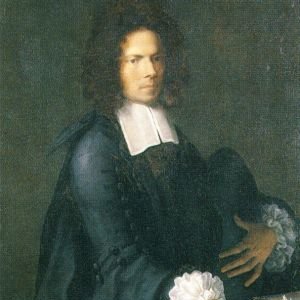Vespers for the Blessed Virgin
in XVII century St.Mark’s Church in Venice

Vespers for the Blessed Virgin in XVII century St.Mark’s Church in Venice
New edition by Sergio Balestracci
- Versiculus Deus in adjutorium
- Responsorium Domine ad adiuvandum a 6 v. Claudio Monteverdi (1567-1643)
- Antiphona Dum esset rex
- Psalmus 109 Dixit dominus a 8 v. Giovanni Antonio Rigatti (ca.1615-1649)
- Concerto Sonata a 6 Francesco Cavalli (1602-1676)
- Antiphona Laeva ejus
- Psalmus 112 Laudate pueri a 8 v. Alessandro Grandi (1586-1630)
- Concerto ”Lilia” mottetto a 4 v. concertato Alessandro Grandi
- Antiphona Nigra sum sed formosa
- Psalmus 121 Laetatus sum, a 3 v. Francesco Cavalli
- Concerto Sonata VI due soprani (cornetti) sopra re mi fa sol la Giuseppe Scarani (sec.XVII)
- Antiphona Jam hiems transit
- Psalmus 126 Nisi Dominus, a 5 v. Giovanni Rovetta
- Concerto Venite, sitientes, ad aquas, a 2 voci Claudio Monteverdi
- Antiphona Speciosa facta est
- Psalmus 147 Lauda Jerusalem, a 12 v. op. 9 Giovanni Legrenzi
- Concerto Canzon primi toni a 8 Giovanni Gabrieli (1555-1612)
- Capitulum Ab inizio
- Respons. br. Ave Maria
- Hymnus Ave Maris Stella, a 3 v. concertato Francesco Cavalli
- Versus Dignare me
- Ant. Ad Magn. Beatam me dicent
- Canticum Magnificat primo a 8 voci concertato Claudio Monteverdi
- Oratio Dominus vobiscum, Concede nos, Benedicamus, Fidelium animae
Composers of the Cappella Marciana del ‘600*
The XVII century was for the Marciana Chapel of Venice the most magnificent period: for the yearned Chapel Master activity the most praised composers of the time were hired besides the highest Claudio Monteverdi; their task was the setting up and direction of a numerous and qualified group of both voices and instruments, also providing the composition of pieces for the different festivities as well as continuously renovating the repertoire.
The Vespers of sunday were sung in gregorian chant, but in solemn feast days Psalms, Hymns and Canticles were composed ex-novo: any author left us several collections of compositions for this liturgy, that used to allow much room for the music.
This programme includes the liturgical reconstruction of solemn Vespers for a Mary festivity, alternating works by all the main Chapel Masters from the first half of the XVII century, as was a usual praxis at Saint Mark.
The choice of the pieces, addressed by the liturgy of the Second Vespers, aims at exploring a wide range of different styles and sounds: the 6-voices opening versicle and response “Domine ad adjuvandum” is the most famous; “Dixit Dominus” by the venetian composer Rigatti leads us to consider how much the sacred style of that time was of a high artistic level even in a minor composer.
The “Laudate Pueri” by Grandi comes from the Psalms edition of 1629; in this collection, it is worth noting how an author particularly dedicated to the soloist sacred repertoire could well find his place within the polichoral tradition of Saint Mark.
The “Laetatus Sum” by Cavalli, included in the famous edition of 1656, is a relevant example of the “stile concertato” (3 voices and 5 instruments with the continuo), as well as the hymn “Ave Maris Stella”, from the same collection.
The 5-parts “Nisi Dominum” by Rovetta, from the Psalms of 1626, contributes to characterise the Marcian school of the first 30 years of the XVII century, whereas the “Lauda Jerusalem” witnesses the longevity of the polychoral tradition into the rest of the century (two vocal and one instrumental choirs).
The “Magnificat I”, from the “Selva Morale” by Monteverdi, ends Vespers focused on the venetian style, based on multi-choral structures and voice-instrument juxtapositions.
Besides the gregorian parts, required by the liturgy and strictly connected with the polyphonic compositions, these Vespers include also instrumental pieces, as usual in the custom of the century. Among these, one can find unexpected gems, such as the sonata by the carmelitan friar Giuseppe Scarani, coming from Mantova but active in Saint Mark since 1629, alongside more famous pieces by Giovanni Gabrieli (the most “ancient” among the presented authors) and by Cavalli (venetian by adoption as well as Monteverdi, Legrenzi and Grandi), who had set up six sonatas for several instruments in the quoted edition of 1656, right at integrating the liturgy.
The repetition of the antiphon after the psalm is here replaced by an instrumental “concerto” or by a motet, as in the case of the “Venite Sitientes” by Monteverdi, or the concerted motet “Lilia” by Grandi, from the second book of motets, published in Venice on 1625.
